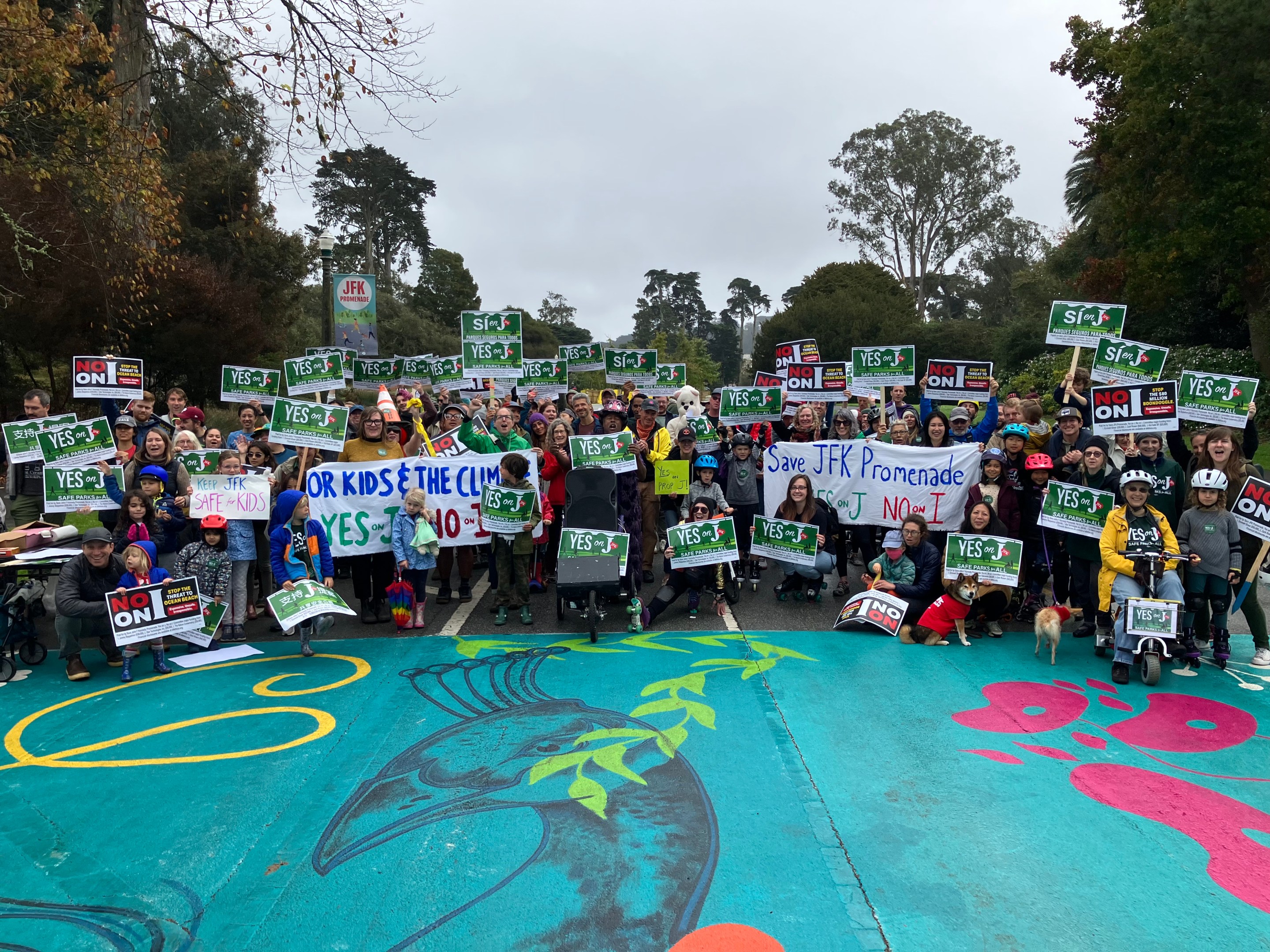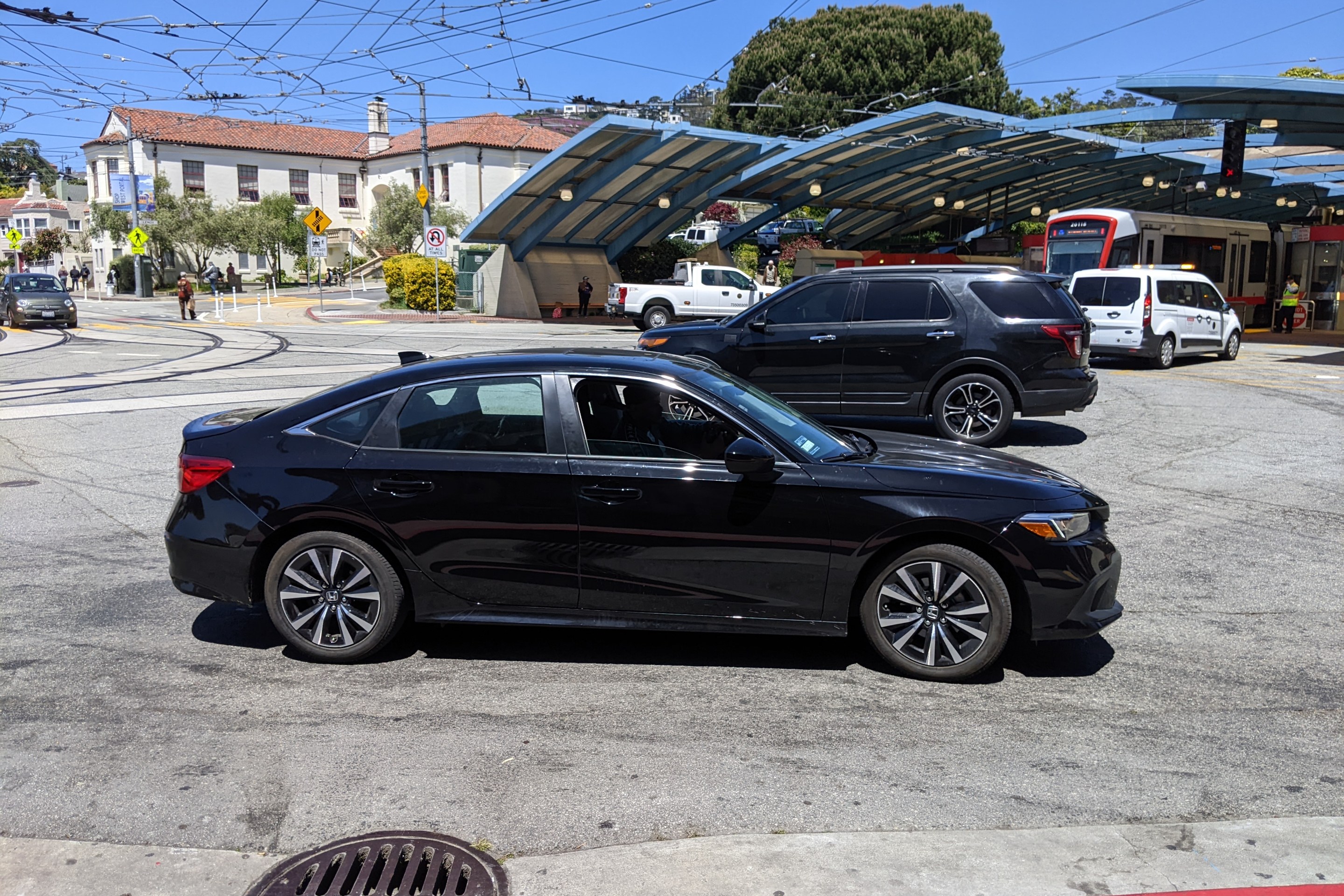Commentary: Vote For a Better San Francisco
1:04 PM PST on November 7, 2022

Pic: Walk SF
Note: GJEL Accident Attorneys regularly sponsors coverage on Streetsblog San Francisco and Streetsblog California. Unless noted in the story, GJEL Accident Attorneys is not consulted for the content or editorial direction of the sponsored content.
Early in the pandemic when schools were closed, vaccines nonexistent, and the lockdown in full force, I remember a wonderful day pedaling down the Great Highway with my child. Next to a stretch of sparkling blue ocean, this former car thoroughfare had been turned into a 17-acre promenade for the weekend. It made for a stunning park, and on that Saturday morning, it provided the opportunity for a normal outing in a time that was far from normal.
Despite its name, the Great Highway was originally intended as a space for recreation and, after its creation in the 1870s, was managed by the San Francisco Parks Department. Since the beginning of the pandemic, when it was declared car-free, the Great Highway has served its mission better than ever. It has become a place for children to learn to ride a bike or celebrate Halloween with trick-or-treating and costume parades. Closing the street to cars has also been an important step in testing a retreat from the shoreline, a strategy required to address sea level rise along this vulnerable part of the coast.
The Great Highway is not the only street that has been reclaimed. Joined with John F. Kennedy, Martin Luther King Jr., and Middle Drives, there are car-free routes through Golden Gate Park extending to the beach. Last April, the Board of Supervisors voted to close JFK permanently to traffic, recasting it as a 24/7 recreational corridor. This fall, large-scale murals and other public art installations are popping up on the roadway as a part of the “Golden Mile” project, which hosts live performances, a beer garden, a skating course, and street games.
The Great Highway and JFK Promenade complement the 47 miles of “slow streets” created during the pandemic. Although they account for just 4% of San Francisco thoroughfares, slow streets play an outsized role in providing safe places to be outside. Streets make up some of our largest public spaces in cities. With the urgent pressure of climate change and our inadequate progress in reducing GHG emissions, the epidemic of U.S. traffic violence (the highest in 20 years), and the extraordinary appeal of enjoying our neighborhoods when we are not threatened by or trapped in cars and traffic, car-free streets have felt like welcome progress in making cities more of what the future demands of them.
All this progress is at risk.
On November 8 voters will consider Prop I, which reverses the Board of Supervisors vote and returns cars to JFK and the Great Highway. While Prop I has gained public support, it is countered by Prop J, which reaffirms JFK as a recreational space. Making streets car-free is only possible by creating great public transit options, which are supported by Prop L. Prop L preserves – but does not raise – a half-cent sales tax to fund public transportation, which is crucial to leveraging four to seven times that amount in federal and state funding.
Prop L maintains the same tax that brought new Muni buses, improved BART stations, eliminated private vehicles from Market Street, and created bus-only lanes, crosswalk improvements, and protected bike routes. If passed, the sales tax would work to make streets safer by calming traffic, expanding the bike network, investing in the Safe Routes to Schools Program, and extending the city’s Paratransit program for seniors and people with disabilities. It would electrify Muni’s bus fleet, increase rider capacity, and support community-led planning efforts to prioritize those that most rely on walking, biking, and transit but lack adequate infrastructure to make that dependence efficient or safe.
Together, Prop J and L support continued progress for equitable transportation, safe streets, and solutions to the climate crisis. In a city where transportation contributes nearly half (47%) of carbon emissions, transit, biking, and walking are essential to addressing climate change and ensuring equity. Though our city is proud of its environmental ambition, we are falling short. While we debate over a few miles of roadway today, other cities are permanently closing theirs. Cars are now banned in much of New York’s Central Park, and on Beach Drive in Washington, DC’s Rock Creek Park. San Franciscans can “be the change,” raising the bar on what U.S. cities can become. Now is the time to show it.
We have an environmental, social, and moral obligation to reinvent cities. The urgency of global warming requires action today that cannot wait to be done in future decades. The COVID pandemic forced an experiment in massive change upon us, offering a new version of urban life tailored to people, not cars. We have the chance to create safe, thriving, just, and nourishing places to live. On November 8, vote YES on J and L and NO on I.
***
Alison Sant is a partner and co-founder of the urban design practice, the Studio for Urban Projects. She is the author of From the Ground Up: Local Efforts to Create Resilient Cities (Island Press, 2022), a book that examines how American cities are mitigating and adapting to climate change while creating greater equity and livability.
Stay in touch
Sign up for our free newsletter
More from Streetsblog San Francisco
Commentary: Merchants Are Getting People Killed
The number one local obstruction to curbing traffic violence is local commerce and merchant groups.
Supervisor Melgar Betrays Promises, Sells Out Family Killed in West Portal
Well that didn't take long




